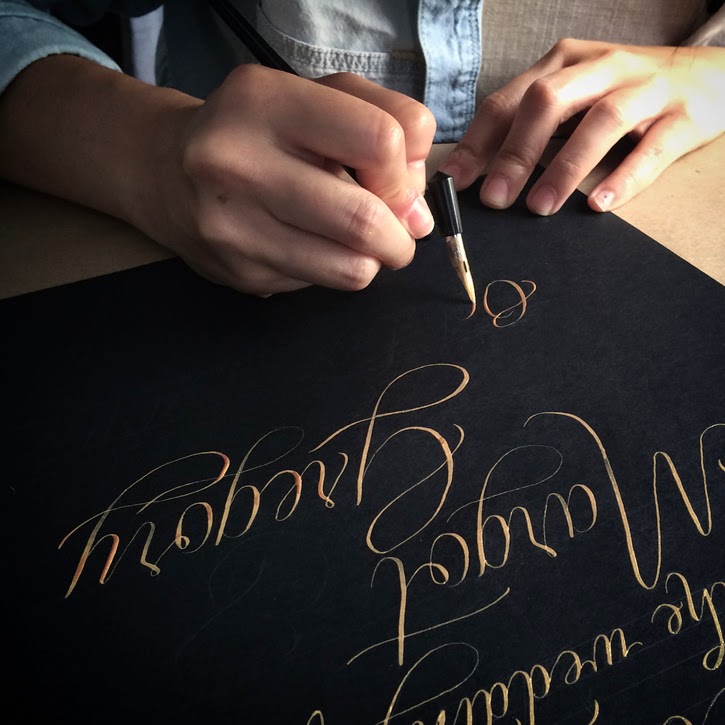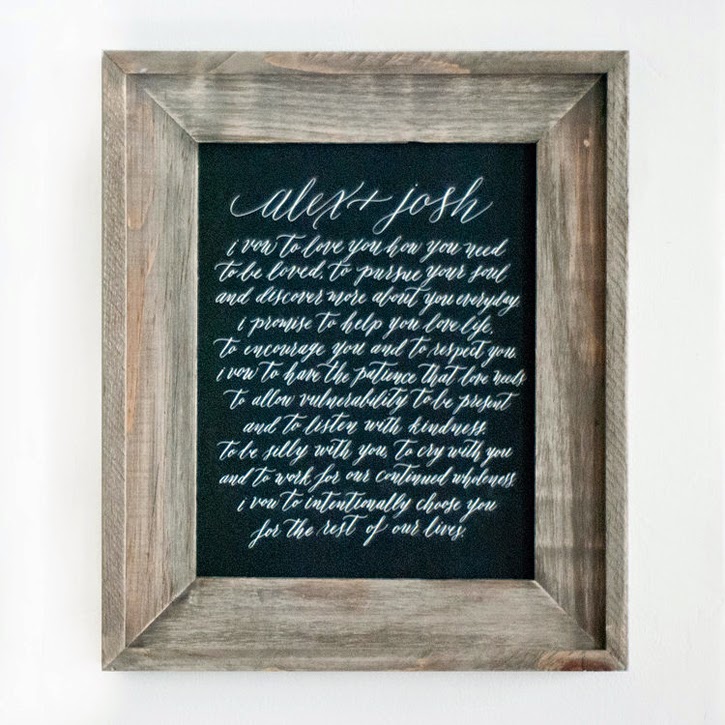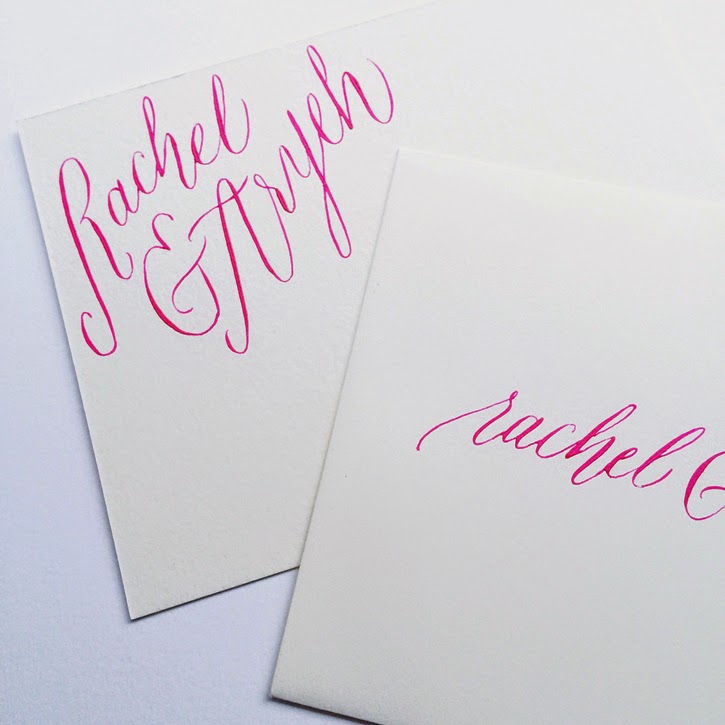Hello readers! I'm excited to be part of Baum-Kuchen's September newsletter around the lost art of analogue. It feels like just yesterday when I spent hours recording music on cassette tapes, creating scrapbooks from magazine cut-outs and developing rolls of black and white film in a darkroom. What is truest and dearest to my heart is the art of handwriting— I spent many hours of my youth practicing my loopy L's and my teenage years composing letters to my friends and writing bad poetry. They're like capsules from another time and something I hope we continue to pursue and treasure in this digital age. Enjoy!
— Angie Park
-------
"The beauty and nobility, the august mission and destiny, of human handwriting. Eliza ended by acquiring an extremely uncommercial script which was a positive extension of her personal beauty."
—Pygmalion, George Bernard Shaw,1912
This summer, as part of a penpal project, I picked up a pen and wrote a long letter to a stranger in New York. With so many of our day-to-day efforts demanding us to furiously type, text, control-alt-delete, it felt so nice to carefully craft a letter with a pen in hand. The gentle push against my writer's bump on my right middle finger unfailingly reminds me of all the words, feelings, and letters written over the past decades, a lovely badge of pride from a different generation.
My first significant experience with “penmanship” started in the third grade. Miss Woodworth would pass around special pens and handwriting paper to learn cursive. We would spend time working through the alphabets from A to Z. It’s been 24 years since the third grade, but I remember being awed at the shapes of capital letters (especially the letter Q and F), and feeling the wonderment at the letters connecting and "holding hands." This childhood exercise has ingrained in me, a deep respect for the handwritten— the haptic qualities that always brings me a sense of warmth and sentiment. Over the next few years, my classmates began to develop our own handwriting style— when I think back, it captured each of our personalities and character as though it was an extension of who we were.
Just like our fingerprints, our handwriting is unique and special to who we are, differentiated by the shapes, slopes, spaces, and the rhythmic nature of our letters and words. There is power in our handwriting in the way it retains and preserves our history and our connection to what is human.

-------
"The beauty and nobility, the august mission and destiny, of human handwriting. Eliza ended by acquiring an extremely uncommercial script which was a positive extension of her personal beauty."
—Pygmalion, George Bernard Shaw,1912
This summer, as part of a penpal project, I picked up a pen and wrote a long letter to a stranger in New York. With so many of our day-to-day efforts demanding us to furiously type, text, control-alt-delete, it felt so nice to carefully craft a letter with a pen in hand. The gentle push against my writer's bump on my right middle finger unfailingly reminds me of all the words, feelings, and letters written over the past decades, a lovely badge of pride from a different generation.
My first significant experience with “penmanship” started in the third grade. Miss Woodworth would pass around special pens and handwriting paper to learn cursive. We would spend time working through the alphabets from A to Z. It’s been 24 years since the third grade, but I remember being awed at the shapes of capital letters (especially the letter Q and F), and feeling the wonderment at the letters connecting and "holding hands." This childhood exercise has ingrained in me, a deep respect for the handwritten— the haptic qualities that always brings me a sense of warmth and sentiment. Over the next few years, my classmates began to develop our own handwriting style— when I think back, it captured each of our personalities and character as though it was an extension of who we were.
Just like our fingerprints, our handwriting is unique and special to who we are, differentiated by the shapes, slopes, spaces, and the rhythmic nature of our letters and words. There is power in our handwriting in the way it retains and preserves our history and our connection to what is human.
Over the years, I've collected letters, notes and postcards from friends and family. Every now and then, I like to take out my box of handwritten notes and read through them— and it always brings me back to that time and place, and the memories feel fresh like the morning dew. It's a lovely and enduring reminder and continued bridge with the people who have passed through my life.
Nothing in this world can replace the feeling of perusing through old love letters, reading the Gettysburg Address in Abraham Lincoln's own handwriting, finding old notes in between passages from a book passed down to you by your grandparents, or cooking a dish from a handwritten recipe. There is tenderness, care and warmth in all script, and whispers of a lingering presence. An unintentional relic and gift from the past. I hope that we all pass along these gifts to the people we love as well.
Today, I'm also excited to share a short Q&A with Paula Lee, an in-house calligraphy for Fourteen-Forty. I met Paula several years ago in New York City and amongst many things, we shared a deep interest in the Arts. Over the years, we've collected many experiences together. I have always been awed by her wide range of interests which includes her exquisite and impeccable summer feasts, her studies around the ever-tremendous James Joyce, and her ability with words. Her cards, notes and messages were always to treasure and savor.
Paula is someone who has inspired me, through her thoughtfulness, and her deep love and interest in literature and beauty— all of which shines through her calligraphic work.

|
| Photo Credit: Paula Lee & Patricia Kim of Fourteen Forty Design Studio |
 |
| Photo Credit: Paula Lee & Patricia Kim of Fourteen-Forty Design Studio |
I've always been someone who loves writing and giving cards, be it for birthdays or just as a way to say hello. Sometimes I would spend more time decorating the envelope with drawn letter forms of the recipient's name than writing the actual message! Learning calligraphy was a natural extension of that practice.
What do you enjoy most about being a calligrapher?
In my former life, I spent most of the work day looking at spreadsheets. I love that calligraphy is a departure from that experience - it's tactile, creative and a way to unplug from the distractions of the modern world. I also really enjoy that moment when I complete a project, knowing that I've brought something to life. It's gratifying to be able to hold the piece in my hands, study it as a finished work and send it out into the world.
 |
| Photo Credit: Paula Lee & Patricia Kim of Fourteen Forty Design Studio |
What are some of your biggest inspirations? Who/what influences your work?
Much of my inspiration comes from the immense body of calligraphy work on Pinterest and Instagram. The art form has evolved tremendously from its Copperplate roots and I'm particularly drawn to the styles that nod to the unfurled look of handwriting. Betsy Dunlap, Maybelle Imasa-Stukuls and Molly Jacques are among my favorite modern calligraphers.
What are some of your favorite supplies?
My go-to nib is the Nikko G, which I use with an oblique penholder. I prefer sumi ink for everyday black and for colors, I mix up gouache paint with a bit of water.
| Photo Credit: Paula Lee & Patricia Kim of Fourteen Forty Design Studio |
Can you go a little into your process?
When I go for a jog, the first half mile is a warm up for my legs to find their rhythm. Calligraphy works similarly, in that it's good to loosen your hand with some warm up exercises before diving into a project. I usually do this by writing out the alphabet twice, in both upper and lower case sets.
In this digital 21st century, we see a lot of people connecting back to "the old way" of doing things. What is it that makes people want to circle back to this art form?
On the spectrum of digital to analogue, the pendulum had swung so much toward the former that it only seems natural that the equilibrium has been shifting backwards. With regard to calligraphy, it may be more efficient to print addresses for 200 envelopes digitally vs. calligraphing each one, but there is a personal element to the hand-written that resonates on a human level. People may be responding to processes done by hand because it makes them feel connected to people as opposed to machines.
----
Paula Lee is a calligrapher who lives and works in New York City. When she isn't putting nib to paper, she can be found making friends with neighborhood dogs, hitting the pavement in her Asics running shoes and whittling down her long list of books to read. For any calligraphy inquiries, you can reach her at paula@1440nyc.com.
3 comments
Showing items 1-3 of 3.


Thank you so much Susan & Danny! Angie’s article definitely inspired me too. Such a classic but intriguing topic.
Once again I love your site. I couldn’t agree more about the treasure of a handwritten letter! You articles AND your products never fail to inspire me! Thank you.
great read. such a refreshing reminder,
“the lost of handwriting” and the power and the intimate relationships we all have with our hands. inspiring. thanks :) really enjoyed the post!